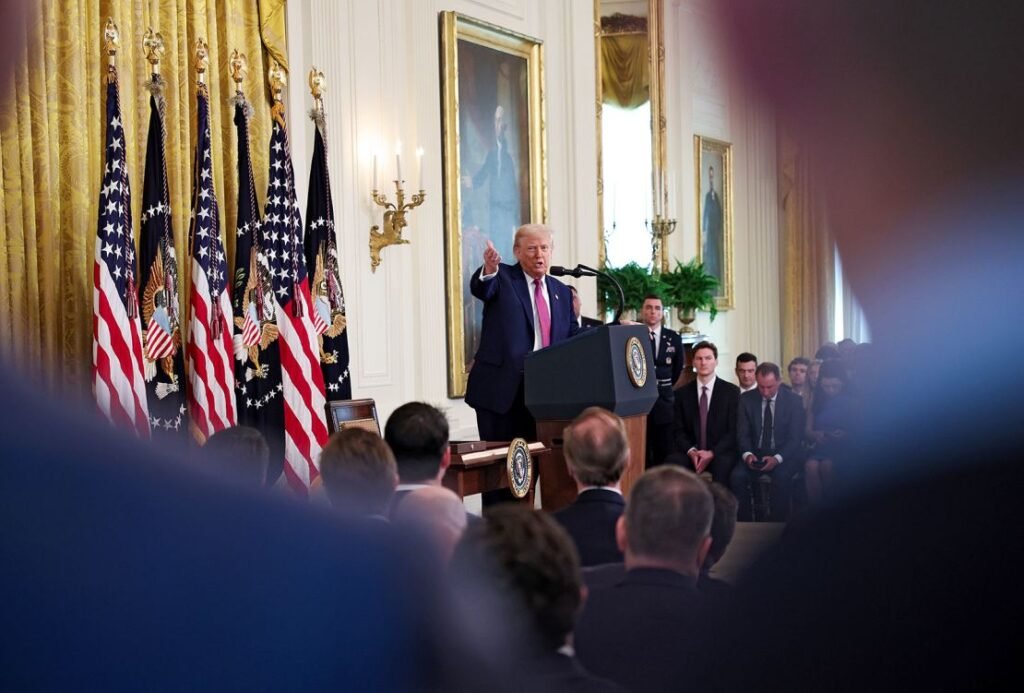Good morning. Yesterday the US and China announced that they have agreed to a framework to restore a trade-war truce. The details are sparse, but it appears that there will be concessions from China on rare earths and magnets, and the US will soften some technology export controls and visa restrictions. The market did not get excited: the S&P 500 finished the day down 0.3 per cent, and Chinese markets only rose a little. Email us: unhedged@ft.com.
Inflation
It made sense that April’s CPI report didn’t show much impact on prices from tariffs — it was the early days of Donald Trump’s tariff war, and it takes time for producers and retailers to make pricing decisions. May’s cooler-than-expected report takes a bit more explaining.
Core inflation, which excludes energy and food, was up 2.8 per cent from the year before, the same as April. But Unhedged’s preferred measure, annualised monthly change in core CPI, came down, after picking up in April:

While there were some indications that tariffs were pushing prices up — major appliances jumped more than 4 per cent from April, and toy prices climbed 1.3 per cent — the real surprise is the prices that didn’t rise. Apparel declined 0.4 per cent for the month. New and used-car prices fell, even as carmakers said they would have to increase prices. Smartphone prices fell, too.
But it is, alas, too early to say that the good news will last. Given the wild inconsistencies in the administration’s tariffs policies, importers, wholesalers and retailers may still be working through pre-tariff inventories, or sacrificing some margin to hold market share while they wait and see where tariffs actually end up. With tariffs persisting and inventories falling, however, we think there may well be price pressure to come.
There are also parts of the report that suggest some of the pre-tariff inflation is still lingering — setting up a sticky situation for the Federal Reserve. Services (excluding energy services) moderated but stayed stubbornly high at 3.6 per cent year-over-year, largely due to rent price increases. It’s possible that the Trump administration’s immigration policies are playing a part. Home and elderly care — an industry particularly reliant on immigrant labour, according to the Bureau of Labor Statistics — saw a 7.1 per cent annual increase.
Every month where the prices of imported goods do not rise quickly is a good month. It is possible that the economy is flexible enough, companies’ margins thick enough, and Trump and his team timid enough, that tariffs will ultimately have a mild impact on prices. But we’ll need a few more months to be sure, and the market seems to agree. While the Fed-policy-sensitive two-year Treasury yield fell seven basis points after the CPI report, stocks were muted.
The case for a rate cut is taking shape, but we’ll all have to hold our breath a little bit longer.
(Kim)
The distorted copper market
While the Trump administration has yet to announce a copper tariff, there is wide speculation that it is planning to. The reasons are straightforward. China has dominated copper smelting, or extracting copper from copper concentrate. And the administration appears to want copper to be mined and smelted in the US, and considers this a national security issue. China’s overcapacity does indeed introduce market distortions, but the threat of tariffs has only made the problems worse.
The prospect of copper and other tariffs have pushed US copper prices up, well above prices in London:

The divergence has resulted in massive flows of copper to the US. US manufacturers are buying to stay ahead of any possible tariff, and traders are taking advantage of the price arbitrage, then scrambling to cover their positions with physical settlements of the metal. Copper inventories in the US have hit a 5-year high:

The arbitrage is affecting prices around the world. The London price has been rising to catch up. And copper buyers in Europe, Africa and Asia are facing shortages and paying a premium on top of the London rate.
This comes on top of issues in China. The Chinese government has made a push to support its metal industry in recent years, resulting in a big surge in smelting capacity. This had led to a supply-demand imbalance, particularly in the market for unsmelted copper concentrate, said Andrew Cole, principal analyst for base metals at Fastmarkets.
The combination of that pre-existing supply imbalance and the extra demand from the US is turning the economics of the smelting industry, at least in China, on its head. Typically, smelters charge a fee to turn the copper concentrate into refinable copper. That fee has now gone negative, meaning the smelters are paying miners and metals companies to get the concentrate in order to keep their operations running.

So far, Chinese smelter output has not fallen in response. As Cole at Fastmarkets pointed out to Unhedged, “smelters have been very resilient . . . and we’ve had very few cutbacks”. Indeed, Chinese exports of finished copper have generally increased. And Chinese imports of copper concentrate have, too:

According to Alice Fox, associate director for commodities strategy at Macquarie Group, the recent inversion in spot prices mostly reflects the Chinese market, but smelters elsewhere are also feeling the pinch:
The negative price is the spot price; a lot of concentrates are sold under annual terms instead, which currently has a positive [smelting fee] of $21.50 per tonne. That is still very low; at that level smelters should be just about break-even . . . There is a concern over how long smelters can continue at low or negative margins.
For vertically integrated smelters — most [of the smelting] outside of China — 90 per cent of their concentrate would be under the annual contract, at a positive [fee].
Smelters also generate revenue from other metals, such as gold, which are byproducts of copper smelting. That should help them stay solvent.
If Trump’s tariffs do take effect and more US smelting capacity is brought online — without a reduction in smelting capacity or a pick-up in copper mining elsewhere — competition between countries and smelters could become more fierce, which could flow through to copper prices. But there are rumblings that Chinese smelters may cut output. In the short term, however, many analysts are bullish on the copper price. From Fastmarkets’ Cole:
There are bullish fundamental undercurrents in copper due to tariff-related supply distortions, compounded by the threat of supply disruptions created by extreme imbalances in copper’s raw material [concentrate] markets.
The strange happenings in the copper market are just one instance of a problem visible elsewhere. State-supported Chinese overcapacity does create distortions; US tariff policy — actual or anticipated — introduces new imbalances.
(Reiter)
One good read
FT Unhedged podcast

Can’t get enough of Unhedged? Listen to our new podcast, for a 15-minute dive into the latest markets news and financial headlines, twice a week. Catch up on past editions of the newsletter here.





